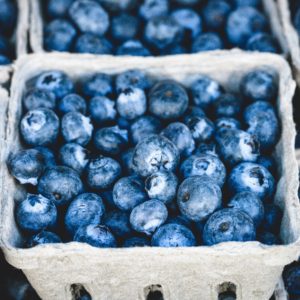Even when it seems that you are on the best fat burning nutrition and fitness plan ever –that’s when lightning strikes – (always when you least expect it) – “Sugar, I gotta’ have sugar!”
A few mouthfuls of this “super bad” carbohydrate in your fat loss boat and it begins to sink, a few more spoonfuls – it’s lost! Then you rationalize to yourself, “Ah, I’ll just make up for this little mistake tomorrow by starving myself – the vicious yo-yo rebound cycle is underway. The battle of the bulge now becomes the battle of the sugar cravings. Don’t worry, resistance is not futile!
Sugar as a Reward
Let’s get started by addressing the nagging emotional addiction, leftover from childhood and the nutritional and toxic imbalance stresses on your body. Some of it is instigated by genetics, but in varying degrees highly specific to each individual. The most fundamental emotional component of this type of craving has to do with simply – perceiving sugar as a reward.
Sugar rewards are given constantly in childhood – (even at the dentist office which has got to be the greatest contradiction of all), and is carried on in adulthood as both sweet and alcoholic cravings. Orthomolecular medicine considers alcohol a more sophisticated form of sugar craving, because the physiological mechanism and soothing after-effects for each are so similar.
Quite in fact, alcohol is perceived as a “sweet” adult reward – just think of any typical celebration from weddings to promotions – sweet treats and alcohol abounds as the central part of our reward systems. When people become stressed, they again reward themselves by drinking alcohol and/or eating sweets! Stress and celebration rewards have you coming and going into this “sweet trap.”
As compared to our self-imposed sweet reward system, the physiological side of sugar cravings is much more invisible and therefore much more difficult to actually see clearly. The good news is that orthomolecular nutritional medicine thoroughly understands these biological mechanisms. This is the basis behind the BioCorrect Nutrition™ Analysis. It actually goes so far as to measure these invisible forces which renders them completely visible to us. BioCorrect Nutrition™ then takes it one step further to efficiently fix them at their root-nutritional/metabolic source!
First Steps to Overcoming Sweets


Step 1: The emotional reward system of using sugar can be modified at the “bare-bones” minimum by substituting “healthier” sugars, instead of highly refined and man-made sugars like sucrose (cane sugar) and high fructose corn syrup. Your body was designed to eat raw fruit, vegetables, nuts and some whole grains. These add phytonutrients, enzymes, minerals, vitamins and fibers found naturally in fruits and vegetables as well as carbohydrates. It was not designed to absorb sugary and high fructose corn syrup-laden soft drinks and candies offering no other nutrients.
Most importantly in step 1, read the ingredient labels on your processed food containers before your buy them. You can cut out significant processed sugar content by choosing a different item or even brand.
Step 2: The next step is substituting a reward system that does not emphasize sugary treats and alcohol. In the bigger picture – we must instill in ourselves and our children that we “eat to live” not “live to eat.” There is much more to food than taste alone (although herbs and spices help). This takes creativity and imagination, but it can be done to your betterment!
Step 3: From purely a metabolic standpoint, there are distinct reasons for sugar cravings for which we all should be aware. More importantly, we must investigate this for ourselves in relation to our own unique body and life circumstances. One of the quickest ways to overcoming your sugar cravings is to order a BioCorrect Nutrition™ Analysis to know precisely how your body is absorbing, retaining and utilizing foods and nutrients today.


Scientifically-Documented Metabolic Causes of “Sugar-Mania”
- Hunger—just letting yourself become hungry by skipping meals or by eating too many junk foods increases the tendency for sugar cravings.
- Deficiencies, excesses, antagonistic proportions of nutrients and toxic presence in your body.
- A classic example of a sugar craving profile in bodies that we have measured includes deficiencies of the minerals iron, manganese, zinc, lithium and magnesium along with elevated levels of lead and copper in conjunction with an outright excess or deficiency of chromium.
- 99.47% of Americans nutritionally tested by our medical lab exhibit multiple, simultaneous and sometimes profound deficiencies and excesses of all fundamental nutrients, along with toxic infiltrations (missed by standard medical tests). The odds are high that this phenomenon is biochemically causing your sugar cravings.
- Neurotransmitter imbalances – caused by nutrient imbalances. This means reduced thyroid and adrenal function, liver damage*, an overactive pancreas and inadequate correct protein intake.
- Hormonal disturbances – again, as in the above — directly related to minerals and other nutrients.
- Physical inactivity – more physical activity reduces your appetite for sugar.
- Boredom – eating sugary treats becomes entertainment for people who are bored.
- Anxiety/Stress – over-utilizes certain key nutrients leading to deficiencies/imbalances which affect neurotransmitter function in the brain which in turn opens the door to sugar cravings.
- Social complacency – “wanting to be like others and do what they do.” So there you are in a celebration drinking and eating what is served with everyone else, just to be “in.”
- Drugs – certain drugs and drug withdrawals are known to increase sugar cravings.
- Antihypertensives and ADD drugs are two that are directly connected to this problem, along with nicotine and alcoholic withdrawal are good examples.
- Poor digestion—incomplete digestion adds to deficiencies which increased sugar cravings.
- Allergies – certain hidden allergies when left unchecked, manifest in sugar craving syndromes or what scientists term “the food allergy of addiction syndrome.”
- Dehydration – water deficiency can increase sweet cravings.
- Excessive intake of bleached flour and sugar—due to the high glycemic index (GI) and glycemic load (GL) effects of this type of processed food induces greater sugar cravings.
- Lack of regular sunshine and fresh air – sunshine and fresh air have positive effects on anti-depressive neurotransmitters which tends to reduce cravings and addictions.
* Liver damage is one of the most overlooked reasons for sweet cravings. The liver is known as the Master Biochemist which serves as the most central chemical processor for all food for all tissues of the body. Weak livers foster interactive calcium deficiencies which lead to a reduction of stomach acid production. This leads to inadequate protein digestion which increases urea build up, and increases emotional tension, fatigue, headaches and even heart attack potential. Inadequate protein digestion may also lead to increased starch/sugar hypersensitivity to wheat-oats-potatoes-bleached sugars and other related foods.
Reinforcements in your Battle of the Sugar Cravings
Besides using nutrition tests and their corrective therapies to eliminate nutritional deficiencies and excesses and toxic infiltration over time, there are other “craving-elimination-time-saving boosters” worth mentioning in the short-term.
Hints and Tips: Time Savers to Overcome Sugar Cravings
- More sunshine and fresh air.
- Greater amounts of physical activity.
- A higher intake of the amino acids glutamic acid and/or glutamine (its buffered form), L-carnitine, L-cysteine, L-tyrosine and L-tryptophan (at night, only).
- Licorice/wild yam/horse radish/juniper berries/ginseng/lobelia and mistletoe tea/herbs.
- Onion homeopathic extracts.
- Cayenne pepper.
- Higher intake of essential fatty acids.
- More raw food in the diet.
- Lemon juice just before meals.
- Super-Booster — Lemon juice/amino acid fast with accelerated intake of glutamine, proportioned amino acids, the enzyme bromelain, olive oil and vitamin C crystals.
- Use of sugar substitutes such as Stevia in place of sugar, for sweetening affect.
- Consumption of more green tea during the day.
- Eucalyptus/Rose aromatherapy.
- Chinese Formula – Siler Root and Platycodon.
- Bach flower remedies – Crabapple, cherry plum, cerato, agrimony.
- Pumpkin and/or squash seeds before bedtime.
The above boosters are short term craving buster “adaptogenic nutraceuticals” aimed at curbing sugar cravings. The long-term absolution of sugar cravings is achieved when your metabolism’s efficiency increases by using nutrition tests, and customized nutrition and supplement programs to address each nutrient retention and toxic elimination change in your body over time. The long-term affects of test-dependent orthomolecular biocorrection will preclude dependence on the short term helpers listed above. But it’s still nice to know that they are there, whenever the craving may start up for whatever reason.
Know Precisely What Your Body Needs
Learn more about how to rebalance your vitamins and minerals to naturally calm your sugar cravings by referring to your BioCorrect Nutrition™ Analysis (BNA) report or order your BNA today. The BioCorrect Nutrition™ Analysis is a medically-proven, clinical laboratory test that measures 36 trace and toxic minerals in a patient’s hair sample; which correspond to an individual’s biochemical and metabolic status. With these test results; a personalized food and supplement plan can be designed to safely biocorrect each person’s unique biochemistry into metabolic balance by eliminating the excesses and building up the deficiencies.
Stop the Guesswork… It’s In Your BNA!
Suggested Reading:
- Tefft, GH. Your Personal Life. Westlake Village, CA: Angel Mind, 2006
- Tefft, GH. For Your Body Only: Discover the Diet You Were Born to Eat. Dragon Door Publications, 2003
- Watts, D.L. “Commonly Asked Questions About Hair Mineral Analysis.” US: Trace Elements, 1999
- Watts, D.L. Trace Elements and Other Essential Nutrients. T.E.I., 1995.
These statements have not been directly evaluated by the FDA. These products are not intended to diagnose, treat, cure, or prevent any disease as a substitution for standard medical care.

